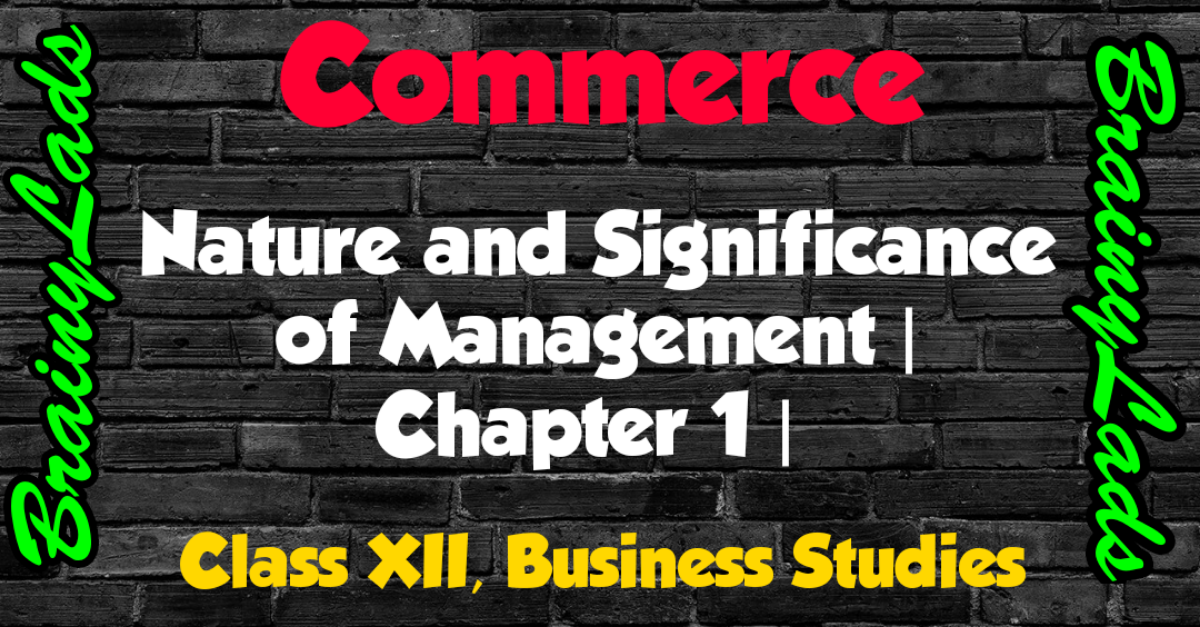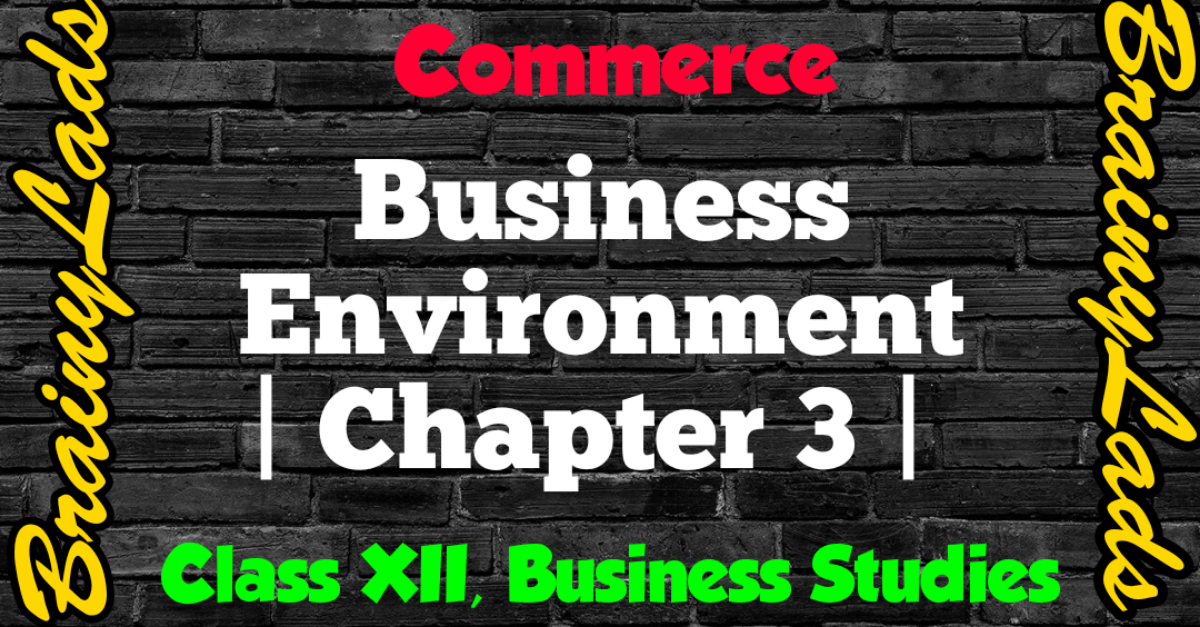Marketing Management Class 12 | Marketing Mix |
Table of Contents
Marketing Management Class 12 | Marketing Mix | Chapter 11 |
Meaning of Marketing
Marketing Management Class 12 : Marketing refers to the process of all those activities wherein goods and services move from producer to consumer to satisfy the needs of latter. Needs refers to feeling of deficiency of something which leads to dissatisfaction if not satisfied.
Features of Market
- Need and Want: The process of marketing fulfills the needs and wants of the consumers. For example; hunger is a natural phenomenon which is a need and satisfying that need by eating burger is a want.
- Creating an Offering Market: Through marketing, information related to the product is shared to the customer.
- Value of Customer: In the today’s scenario, a customer is the king of market which means every product is designed as per the choice of the customer.
- Exchange Mechanisation: The process of marketing becomes possible through the medium of exchange between buyer and seller. The seller supplies the product whereas the buyer pays the price or demand of the product.
Functions of Market
- Gather and Analyse Information: Marketing helps to gather important information and analyse them so that a seller can sell his product in the market such as; trend in the market, price of competitor’s product etc.
- Standardisation and Grading: Marketing standardises the product on the basis of raw material, size, design etc. whereas grades the product on the basis of quality of finished product.
- Facility of Transportation: Marketing connects the place of production and the place of consumption through the facility of transportation.
- Fixing the Price: Marketing function fixes the price of product by considering all the cost, profit rates etc.
- Promotion: It encourages the product by providing information to the customer through advertising, publicity, sales promotion and personal selling.
- Facility of Storage: Marketing provides facility of storage so that the time can be utlised.
- Packaging and Labelling: Packaging refers to the process of providing a case to the product which helps in avoiding breakage, damages etc. whereas labelling refers to the process of putting a slip on the product so that the product easily be identified.
Meaning of Marketing Management
Marketing management refers to the process of managing all the marketing activities. In this, all the functions of management such as planning, organising, staffing, directing and controlling are performed in the context of marketing.
Process of Marketing
- Choosing a Target Market: First of all, the type of consumer for whom the product will be sold is decided.
- Growing Customers inn Target Market: Under this, the marketing manager makes effort so that the customer in target marketing may purchase the products and remains associated with the company.
- Creating Superior Values: On this step, the superior value of the product is created by adding special features which surpass the product of the competitor.
Philosophies of Marketing Management
Philosophies refers to those guidelines which guide the efforts of marketing to achieve the desired objective.
- Product Concept: Under this concept, the main focus is on quality of products sold for good quality of product attracts the customer and ends at generation of profit by providing good quality of products.
- Selling Concept: Under this concept, the main focus is on attracting and educating the customers for they are the ultimate users of the product sold by the seller and profit is maximised through maximising sales.
- Production Concept: Under this concept, the main focus is on increase in quantity, low cost of production, perfect distribution system for cheap product is made available and profit is maximised through maximising production.
- Marketing Concept: Under this concept, the main focus is on satisfaction of the customer for those products are sold by the company which leads to higher satisfaction and profit is maximised through customer satisfaction.
- Societal Concept: Under this concept, the main focus is on customer welfare as it is the duty of the company to provide social benefits and maximization of profit is done by customer satisfaction as well as societal welfare.
Meaning of Marketing Mix
Marketing mix refers to the sum of all polices which are formulated in the organisation or successfully completing the marketing activities.
Elements of Marketing Mix
The decision of market is related to four variables which are known as elements of marketing mix.
- Product Mix: It refers to the decision and feature which is related to the product or services such as branding, labelling, packaging, design etc.
A detailed description about branding, packaging and labelling is below:
- Branding: Branding refers to the process which helps to create a distinct identity of the product. It includes brand, brand name, brand mark and trade mark.
A good brand name should be small and simple which can easily pronounceable and self explains about the qualities of product.
Features of Branding
- Branding helps to create a differentiation among the same type of the products.
- Branding helps to fix a different price other than from competitors.
- Branding helps in identifying the product easily by the customers.
- Branding gives a status of symbol to the company in the society.
- Branding helps in advertising the product easily.
- Packaging: Packaging refers to the activity which is performed by the company in order to make the container wherein the product is being packed.
Features of Packaging
- It helps to crate the identification of the product.
- It protects the product from damages, breakage, dirt etc.
- It works as a sales promotion.
- It makes the product convincible for transport.
Levels of Packaging
- Primary Packaging: It refers to the container which is close to the product and kept throughout the entire life of the product.
- Secondary Packaging: It refers to that type of container which provide extra care to the product and makes product identifiable.
- Transportation Packaging: it refers to that packaging which is used to fulfill the purpose of transportation.
- Labelling: It refers to the process of preparing and putting label on the product so that all the information related to the product can be shared with the customer such as price, expiry date, manufacturing date, ingredients etc.
Features of Labelling
- It gives description about the product.
- It makes the product or brand identifiable.
- It helps in promoting the product.
- It provides lawful information like statutory warning.
Types of Labels
- Brand Label: It is that type of label which only contains brand name on the product.
- Grade Label: It is that type of label which highlights the quantity of the product.
- Descriptive Label: Descriptive label gives a detailed information about the product.
- Promotion Mix: It refers to the sum of all the tools which are used to provide information about the product and persuade the customers to buy it.
Elements of Promotion Mix
- Advertising: It refers to that process in which the seller provides all the necessary information about the product through mass communication which motivates the customers to buy their product.
Features of Advertising
- It is an Impersonal Presentation of the product by which the customer gets to known about the product.
- The Speed and Base of Advertisement is very large for it conveys details about the product on a mass basis.
- It is a Paid Form by which a producer can easily convey all the necessary details about the product to customers.
Significance of Advertising
- Significance to Manufacturer
- It increases the customer satisfaction.
- It helps in facing competition
- It increases the market value of the product.
- Significance to Customer
- Price of commodity reduces with increase in scale of production.
- Better quality of product is sold to the customer.
- Educates customer about the product.
- Significance to Society
- It provide employment opportunities to artist, painter, designer etc.
- It helps in economic devepolment of the country by expanding more.
- It helps in growth of communication media companies.
Limitations of Advertising
- The expenditure is added on the final value of the product.
- It encourages sales of inferior quality of products.
- It confuses the buyer.
- It undermines the values of the society.
- Sales Promotion: All the techniques other than advertising, publicity and personal selling are included in sales promotion such as gifts, vouchers, decrease in price etc.
Features of Sales Promotion
- It does not include advertisement, publicity and personal selling.
- These activities are undertaken on some special occasions.
- It helps in increasing the sales of the product.
- It motivates the customer to but the product.
Techniques of Sales Promotion
- Rebate
- Discount
- Lucky Draw
- Quantity Gift
- Contests
- Zero Rated Finance
- Refund
3. Personal Selling: Under this process, the seller interacts with the customer by personally visiting to the buyer’s place and conveys all the necessary information related to the product.
Features of Personal Selling
- It is a personal form of communication in which seller himself visit to buyer
- It helps in increasing the relationship with the customer
- The goods are sold at the time of visiting.
- It clears all the doubts of the customer.
Salesman
A salesman is a person who goes door to door in order to sell the product and to interact with the customer.
Qualities of a Good Salesman
- A Salesman should be health and fit.
- He should have good communication skills.
- He should know every information about the product.
- He should be patient and have a polite nature towards customer.
- He should have ability to inspire the buyer.
- Publicity: It refers to the method of providing information about the product to the customers without making any efforts by the producer.
Features of Publicity
- It shows the better relation with the customer.
- It is a continuous activity.
- It is a specialised activity.
- It satisfies different groups.
Significance of Public Relation
- It builds awareness among all the stakeholders.
- It reduces the promotional cost.
- It helps in increasing the sales
- It builds a different among customers.
Tools Used For Public Relation
- News.
- Speeches.
- Informal Communication
- Public services.
- Place Mix: It refers to the sum of all the decisions which are taken by the producer to make the product available at different places. It includes two decisions which are as follow:
Channel of Distribution
Channel of distribution refers to the path which is used by the producer to transfer the ownership and possession of the goods to buyer.
Types of Channel of Distribution
- Direct Channel: It is also known as zero level channel. Under this channel, the product is sold to customer directly from producer to customer through outlets of manufacturer.
- Indirect Channel: Under this channel, the product is sold to customer by involving intermediaries in the channel. The channel are further classified into three, such as One Level Channel, Two Level Channel and Three Level Channel.
Choice of Channel of Distribution
The type of channel of distribution is chose on the basis of four factors such as Product Related Factors in which all the factor relating to the product is checked like nature of product, shelf-life of product etc., Characteristics of Company in which all the policies and strength of company is checked, Competitive Factor in which all the factors which are followed by competitor is checked, Market Related Factor in which all the taste and preference along with type of customer in the market is checked and Economic Factors in which all the factors related to economy is checked.
Physical Distribution
Under Physical Distribution, the decisions which are related to the storage, transportation, inventory and processing order so that the product is available to all the customer at right place. It involves decision making that how the product will move.
Components of Physical Distribution
- Transportation: It involves the decision that how a particular product will move from one place to another.
- Warehousing: It involves the decision that how a particular product will be stored so that less damages will occur and will available on time during demand.
- Inventory: It involves the decision that how the raw material, semi-finished goods and finished goods will be held.
- Order Processing: It involves the decision which is related that how the information about the product will be received in order to fulfill it.
- Price Mix: Price mix refers to the decision which is related to the fixation of price of the product which is to be sold in the market. Under this all the decision such as price, discount, policy of credit etc. is decided.
Factors Determining Price
- Production Cost: It includes all the cost which is required to make the product from raw material to finished product which is of two types i.e. Fixed Cost and Variable Cost.
- Demand for Product: The demand of the product which is in the market helps to decide the price of the product.
- Purchasing Power: The purchasing power and the type of customer for whom the product is made also helps in deciding the price.
- Methods of Marketing: The methods which are used for marketing the product as the value of those methods are also included in product.
- Price Fixed by Competitive Firm: The price fixed by the competitive firm. Every firm wants to fix price same or lower than the competitive firm so that the firm do not lose the interest of the customer.
We would love your reading of the other chapters given below.
|
# Marketing Management Class 12
Do share the post if you liked Marketing Management Class 12. For more updates, keep logging on BrainyLads


